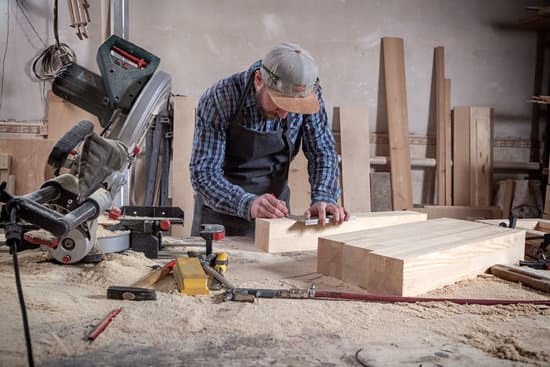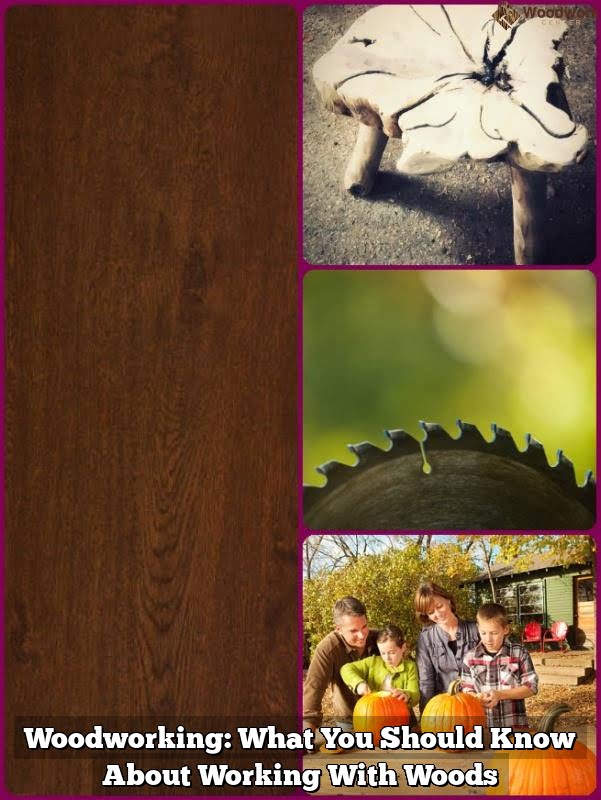Woodworking is a craft that requires not only skill and precision but also a keen eye for selecting the right materials. When it comes to choosing the perfect wood for your projects, lightwoods offer a wide range of benefits and possibilities. In this article, we will delve into the beauty and versatility of light woods in woodworking, exploring why they are an excellent choice for any aspiring or experienced woodworker.
Wood density plays a crucial role in selecting the right material for woodworking projects. Lightwoods, as the name suggests, have a lower density compared to their heavier counterparts. This characteristic makes them easier to work with, allowing woodworkers to shape, cut, and carve intricate details with relative ease. Lightwoods also tend to have less resistance when it comes to drilling or screwing, making assembly smoother and more seamless.
One of the key factors to consider when working with wood is durability and strength. Despite their lighter weight, many lightwoods possess exceptional structural integrity that can rival some heavy hardwoods. This makes them suitable for both functional and decorative pieces in woodworking projects. Additionally, lightwoods often exhibit natural stiffness and stability, ensuring that your creations withstand the test of time.
Light woods are not only practical choices; they also showcase stunning natural beauty that adds aesthetic appeal to any project. Their unique grain patterns and attractive colors vary from species to species, offering endless possibilities for design creativity. From blonde hues to warm reds or striking figured patterns, lightwoods can be used to create eye-catching furniture pieces or intricately carved details that enhance the overall visual impact.
Understanding the Importance of Wood Density
Wood density is a crucial consideration when choosing light woods for woodworking projects. Density refers to the mass of wood per unit volume, and it plays a significant role in determining the properties and performance of the wood. Understanding the importance of wood density can help woodworkers select the right lightwoods that meet their specific project requirements.
Wood density affects several aspects of woodworking, including strength, durability, stability, and workability. Lightwoods with a lower density are generally easier to work with due to their softer nature, making them ideal for shaping, cutting, and carving intricate designs. However, they may not be as strong or durable as woods with higher density.
On the other hand, lightwoods with higher density offer superior structural integrity and are suitable for projects that require strength and stability. They tend to be more resistant to wear and tear, making them ideal for furniture making or cabinetry where durability is essential.
| Wood Species | Average Density (kg/m3) |
|---|---|
| Balsa | 40-300 |
| Western Red Cedar | 330-390 |
| Pine | 330-610 |
Keep in mind that these numbers represent average densities and can vary depending on factors such as age, growth conditions, and the part of the tree from which the wood was obtained. By understanding wood density and considering its implications on strength, durability, stability, and workability requirements for their specific projects, woodworkers can choose lightwoods that best suit their needs and achieve successful woodworking outcomes.
Durability and Strength
When it comes to woodworking projects, durability and strength are crucial factors to consider. The choice of wood plays a significant role in the structural integrity of the final piece. While light woods are often associated with being softer and less durable, there are several lightwood species that offer exceptional strength and longevity.
One such lightwood is ash. Ash is known for its excellent strength-to-weight ratio, making it an ideal choice for applications that require stability and support. It has a straight grain pattern and a light color, allowing for beautiful finishes. Ash is commonly used in furniture making, flooring, cabinets, and even tool handles.
Another lightwood option with superior structural integrity is hickory. Hickory is known for its extreme hardness and shock resistance, making it ideal for items subjected to heavy use or impact. It has a distinctive grain pattern and varies in color from pale yellow to reddish-brown. Hickory is commonly used in tool handles, sports equipment like bats and bows, as well as furniture.
In addition to ash and hickory, another lightwood worth mentioning for its durability is white oak. White oak has excellent decay resistance properties due to its high tannin content. It has a tight grain pattern with golden-brown hue that enhances over time. White oak is often used in boat building, outdoor furniture, flooring, and barrels.
| Lightwood | Strength | Durability | Common Uses |
|---|---|---|---|
| Ash | High | Moderate | Furniture making, flooring, cabinets |
| Hickory | Very high | High | Tool handles, sports equipment, furniture |
| White Oak | High | High | Boat building, outdoor furniture, flooring, barrels |
When choosing lightwoods for woodworking projects that demand durability and strength, it is essential to understand the specific characteristics of each wood species. By selecting the right lightwood that offers superior structural integrity, woodworkers can ensure their creations will stand the test of time while maintaining a beautiful aesthetic appeal.
Showcasing the Natural Beauty
When it comes to woodworking projects, the natural beauty of the wood can truly make a piece stand out. Lightwoods are particularly prized for their ability to showcase stunning grain patterns and unique features. In this section, we will explore some of the most aesthetically pleasing lightwoods that are perfect for woodworking projects.
- Maple: Maple is a classic choice for woodworking due to its light color and smooth texture. It often features a subtle grain pattern that adds elegance to any project. Maple is also known for its durability and resistance to warping, making it a popular choice for furniture making and cabinetry.
- Ash: Ash is another lightwood that offers delicate beauty combined with strength. It has a pale yellowish hue with occasional streaks of brown or red, which create an intriguing contrast in the wood grain. Ash is commonly used in making handles, cabinets, and sports equipment due to its shock-absorbing properties.
- Birch: Birch wood is characterized by its creamy white appearance and fine grain structure. Its straight and even texture makes it easy to work with, allowing intricate designs to be carved into the wood surface. Birch is often used in making furniture, cabinets, and decorative items due to its attractive appearance.
- Poplar: Poplar may not be as well-known as other lightwoods, but it deserves attention for its versatility and affordability. It has a light cream-colored sapwood with occasional greenish undertones that give it a unique charm. Poplar’s uniform density allows it to take staining well, enabling woodworkers to achieve various finishes according to their preferences.
- Pine: Pine is a lightweight softwood that displays rustic appeal with its knotty appearance and warm undertones. Its natural resin content gives pine an unmistakable fragrance that adds character to any woodworking project. Pine is commonly used in construction projects as well as furniture making due to its affordability and availability.
These are just a few examples of the aesthetically pleasing lightwoods that can be used in woodworking projects. Each type of wood offers its unique characteristics, allowing woodworkers to unleash their creative potential and create stunning pieces that showcase the natural beauty of the material. Whether you are a beginner or an experienced woodworker, experimenting with different lightwoods can elevate your woodworking projects to new levels of beauty and artistry.
Ease of Working with Lightwoods
When it comes to woodworking, the ease of working with different types of wood is an essential consideration. Some woods can be particularly challenging to shape, cut, and carve, making the process more time-consuming and labor-intensive. However, there are lightwoods that are a dream to work with, allowing woodworkers to achieve their desired results with ease.
One such type of lightwood is pine. Pine is a softwood known for its light color and even grain pattern. It is widely available and relatively inexpensive, making it a popular choice among woodworkers of all skill levels. Pine is easy to shape, cut, and carve due to its low density, which makes it less resistant to cutting tools. Additionally, pine’s softer nature allows for easier sanding and finishing.
Another lightwood that offers ease in woodworking projects is cedar. Cedar is known for its distinct aroma and beautiful reddish-brown color. This lightweight wood has a straight grain pattern that makes it easy to work with hand or power tools. Its exceptional stability minimizes the risk of splitting or warping during shaping and carving processes. Moreover, cedar’s natural resistance to decay and insects adds to its appeal in both indoor and outdoor woodworking projects.
In addition to pine and cedar, another lightwood worth mentioning is poplar. Poplar has a pale yellow color that can range from white to greenish-brown over time but can be easily stained or painted according to preference. It is highly versatile as it accepts finishes well while maintaining its strength and durability characteristics. Poplar’s fine texture makes it ideal for intricate designs as it cuts cleanly without splintering or chipping.
Lightwoods – Ideal for Beginners
Woodworking is a rewarding and fulfilling hobby, but it can be daunting for beginners who are just starting their woodworking journey. One way to ease into this craft is by working with lightwoods, which are ideal for novice woodworkers. Lightwoods are known for their low density and ease of handling, making them perfect for beginners to practice their skills and gain confidence in their woodworking abilities.
One of the best lightwoods for beginners is pine. Pine is readily available and affordable, making it an excellent choice for those on a budget. It is also relatively soft and easy to work with, allowing beginners to learn basic woodworking techniques such as cutting, shaping, and joinery. Pine’s light color and straight grain pattern make it versatile for various projects, from simple shelves to small furniture pieces.
Another recommended lightwood for novice woodworkers is poplar. Poplar has a moderate density, making it easy to handle while still providing enough stability and strength for beginner projects. It is known for its straight grain and even texture, allowing for smooth finishes when sanded or painted. This makes poplar a great choice for decorative items like picture frames or small boxes.
For those looking to experiment with different wood grains and textures, birch is another excellent option. Birch has a fine texture and attractive grain patterns that can add visual interest to any project. Despite being lightweight, birch is surprisingly strong when properly worked on, ensuring that your beginner projects will stand the test of time.
Lightwoods for Specific Woodworking Projects
Furniture Making
When it comes to furniture making, lightwoods offer a wide range of options that combine beauty and functionality. One popular choice is maple wood, known for its natural light color and smooth grain. Maple is highly versatile and can be used for various furniture pieces such as tables, chairs, cabinets, and even bed frames.
Another lightwood option for furniture making is birch wood. Birch has a pale yellow hue with occasional streaks of brown or red, providing a unique and attractive appearance to any piece of furniture. It is particularly well-suited for creating intricate designs due to its fine texture.
Cabinetry
For cabinetry projects, lightwoods like oak are often the go-to choice. Oak wood offers durability and strength, making it perfect for constructing kitchen cabinets that will withstand constant use. Additionally, oak exhibits a lovely golden hue and distinctive grain patterns that add warmth to any cabinetry project.
Another excellent option for cabinetry is cherry wood. Known for its rich reddish-brown color that deepens over time, cherry wood creates a timeless and elegant look in any kitchen or bathroom cabinet.
Carving
Carving requires a specific type of lightwood that allows for intricate detailing without sacrificing structural integrity. Basswood is a popular choice among woodcarvers due to its softness and low density, making it easy to work with hand tools or power tools. Its pale cream color provides an ideal canvas for intricate carvings and decorative elements.
Another lightwood often used in carving projects is pine wood. Pine features a straight grain with occasional knots that add character to the finished piece. Its natural light color makes it easier to highlight the intricate details achieved through carving.
By considering the specific woodworking project at hand, selecting the right type of lightwood can greatly enhance the final result in terms of aesthetics and functionality. Whether it is for furniture making, cabinetry, or carving, there are lightwoods available that excel in each of these areas. Experimenting with different lightwoods can help woodworkers discover the unique qualities and characteristics that make each type suitable for specific projects.
Sustainable and Eco-friendly Options
Sustainable and eco-friendly practices have become increasingly important in various industries, including woodworking. As people become more conscious of the environmental impact of their choices, there is a greater demand for sustainable and eco-friendly materials. In the world of woodworking, this has led to a rise in the popularity of lightwoods that are known for their environmentally conscious attributes. These lightwoods not only offer beauty and versatility but also contribute to responsible and sustainable practices.
What Makes a Lightwood Environmentally Conscious?
When it comes to choosing sustainable and eco-friendly options for woodworking projects, several factors come into play. One essential factor is the source of the wood. Environmentally conscious lightwoods are often sourced from responsibly managed forests or renewable plantations where trees are replanted after harvesting.
Another aspect is the manufacturing process. Lightwoods that are considered environmentally friendly are typically produced using low-carbon processes that minimize waste and reduce energy consumption. This ensures minimal environmental impact throughout the production process.
Moreover, some lightwoods have naturally occurring features that make them a sustainable choice. For example, bamboo is well-known for its rapid growth rate, making it an incredibly renewable resource. Additionally, salvaged or reclaimed wood can also be considered an environmentally conscious option as it reduces waste by repurposing existing materials.
Popular Sustainable Lightwoods
There are several lightwoods renowned for their sustainable qualities in woodworking. One widely recognized option is bamboo, which grows faster than most other wood species and doesn’t require replanting after harvest due to its extensive root system.
Corkwood is another popular choice known for its eco-friendly characteristics. The bark of cork oak trees is harvested every few years without harming the tree itself, making it one of the most sustainable options available.
Reclaimed barnwood and salvaged pallet wood have gained traction as environmentally conscious choices in recent years. These woods repurpose old structures or shipping pallets, giving them a second life while reducing the demand for newly harvested lumber.
By opting for these sustainable lightwoods, woodworkers not only create beautiful and functional pieces but also contribute to the conservation of forests and promote responsible manufacturing practices. Incorporating environmentally conscious materials into woodworking projects is not just a trend but an essential step towards a more sustainable future in craftsmanship.
What Sets Lightwoods Apart
Lightwoods offer a unique set of characteristics and benefits that make them stand out in the world of woodworking. One of the primary advantages of using lightwoods is their weight, or lack thereof. Unlike heavy and dense woods, lightwoods are much easier to handle and maneuver during the woodworking process. This makes them especially attractive for projects that require intricate detailing, as they can be shaped, cut, and carved with greater precision.
In addition to their ease of use, lightwoods also provide excellent stability and durability. Contrary to popular belief, lighter woods can still offer impressive structural integrity when properly selected and utilized. There are several lightwoods that excel in this aspect, such as pine and cedar. These woods have a solid grain structure that allows them to withstand external forces without compromising their strength.
Another notable benefit of working with lightwoods is their aesthetic appeal. Many lightwoods possess a natural beauty that can enhance any woodworking project.
From the warm tones of maple to the striking grains of birch, these woods add a unique touch to furniture, cabinetry, carvings, and other items made from wood. Furthermore, because lightwoods generally have a softer hue compared to darker woods like oak or walnut, they lend themselves well to various staining techniques that can further elevate their visual appeal.
Overall, choosing lightwoods for woodworking offers numerous advantages. Their lightweight nature makes them manageable and easy to work with while still providing strength and stability. Additionally, their natural beauty adds elegance and charm to any project. Whether you’re a beginner looking to embark on your woodworking journey or an experienced craftsman seeking versatility in your creations, consider exploring the unique characteristics and benefits that lightwoods have to offer.
Conclusion
Light woods have proven time and time again to be an excellent choice for woodworking projects, and this article has explored the many reasons why. From their density to their durability, natural beauty, and ease of working with them, light woods offer a unique set of characteristics that make them stand out in the world of woodworking.
One of the key advantages of light woods is their exceptional versatility. They can be used in a wide range of woodworking projects, from furniture making to cabinetry and carving. Their structural integrity allows for the creation of sturdy and reliable pieces, while their aesthetically pleasing look adds a touch of elegance to any project. Whether you’re a seasoned woodworker or just starting your journey, light woods are ideal for all skill levels.
Moreover, it’s important to note that light woods also provide an eco-friendly option for those who are conscious about sustainability. By choosing lightwoods sourced from sustainable forests or opting for reclaimed wood, woodworkers can contribute to preserving our environment while creating beautiful pieces.
In conclusion, lightwoods truly have it all – beauty, versatility, durability, and sustainability. Whether you’re looking to craft furniture, cabinets or carve intricate designs, light woods offer an exceptional choice for any woodworking project. So why not embrace the charm of these wonderful materials and delve into the world of woodworking using lightwoods? The possibilities are endless and the results will undoubtedly speak for themselves.
Frequently Asked Questions
What is the lightest wood for woodworking?
The lightest wood for woodworking is typically balsa wood. Balsa wood is known for its extremely low density, which makes it highly buoyant and lightweight.
It is easy to work with due to its softness and straight grain, making it a popular choice for crafting models, prototypes, and small-scale woodworking projects. Despite its lightweight nature, balsa wood still possesses decent strength and can be used in various applications where weight reduction is desired.
What is the lightest wood for crafts?
When it comes to crafts, the lightest wood often depends on the specific craft project at hand. However, one commonly used lightweight wood for crafts is basswood.
Basswood is a hardwood that features low density and a pale color, which allows it to be easily carved or shaped with basic tools. Its lightness makes it suitable for smaller crafts like carving figurines, creating decorative items such as ornaments or masks, or constructing intricate models.
What is the most recommended wood to use for woodworking?
The most recommended wood to use for woodworking can vary depending on factors such as the project requirements and personal preferences of the woodworker. However, one type of wood that is generally well-regarded within the woodworking community is solid hardwoods like oak or walnut. These woods are known for their durability, beautiful natural grains, and versatility in many different applications such as furniture making, cabinetry, or decorative trim work.
Solid hardwoods offer stability over time and can handle wear and tear while maintaining their aesthetic appeal. Additionally, they often have good workability characteristics that allow them to be cut, shaped, sanded, joined together easily using traditional woodworking techniques.

Hi everyone! I’m a woodworker and blogger, and this is my woodworking blog. In my blog, I share tips and tricks for woodworkers of all skill levels, as well as project ideas that you can try yourself.





